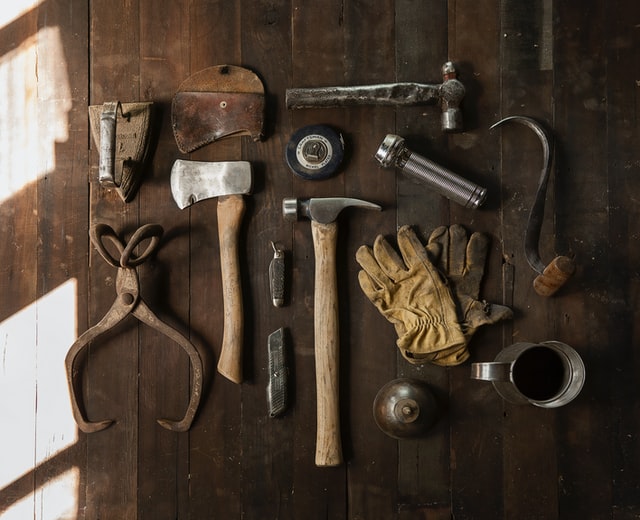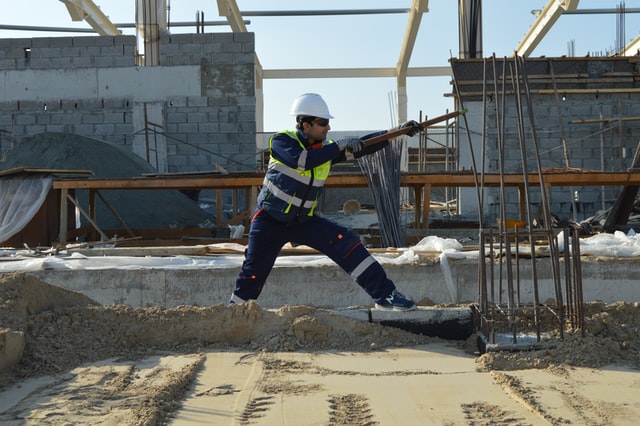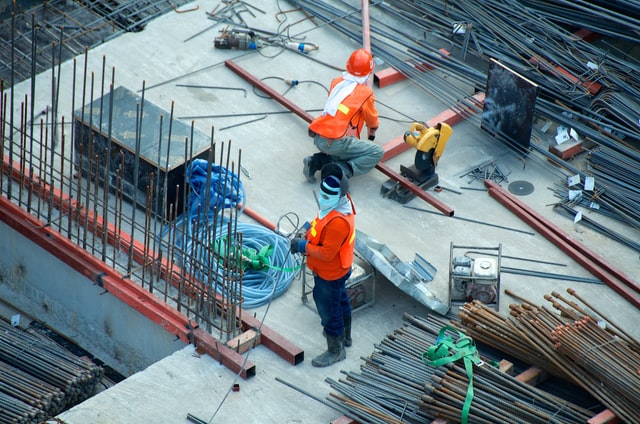This is an excerpt from the Book called “Concrete 43 DIY projects for home & garden” by Malena Skote . Continue reading to learn more about Concrete Plates, thanks to the author.
Plates
Sisters Ann and Louise Turlock have been casting concrete in their spare time for a number of years. They now specialize in casting concrete plates from the tops of old silver-plated plates. The concrete plates become copies of the metal plates, with patterned borders and filigree. Ann and Louise don’t use oil or any other release agent, but place the concrete directly on the tray’s back. They then glaze the finished concrete surface white, and the result is slender, almost ceramic-like plates.

There are plenty of old silver-plated plates and gold-plated trays available at flea markets and second-hand stores. Study how the back of the tray looks, as it is this side that will create the impression in the cement. Check also that the edge isn’t curled back as this can cause the tray to get stuck in the concrete. The tray should be somewhat flexible so that it’s easy to extract from the concrete. You can make the plates quite thin, but you must be as careful with them as you would be with ceramic plates.
Concrete Plate Cast On A Silver Plate
Mold
Silver plate with ornamental border
Materials
Fine concrete
White, water-based paint
Small furniture pads
Tools
Mixing pail
Trowel
Metal spatula
Plastic sheet
File
Thin, tapered metal knife
Paintbrush
Rag
Instructions
- Mix a couple of quarts (liters) of concrete powder with a little water at a time until it becomes spongy and sticks together. Hold the plate upside-down and add a little concrete. Shake it with your hand so the concrete flows around. Add more concrete and shake, and continue in the same manner until the plate’s back is covered with about 5/8 to3/4 inch (1.6 to 1.9) concrete, depending on the size—the larger the plate, the thicker the concrete layer should be.
- Carefully put the plate down and even out the edges with a metal spatula so the concrete just covers the edges but doesn’t run over. Cover with a plastic sheet and leave to harden until the following day.
- Lift up the plate and file around the edge using the metal plate as a support, then leave to harden for another day before removing the mold.
- Press the edge of the metal knife between the metal and concrete plates. Do the same all the way around the plate until the vacuum between the metal and concrete loosens. Leave the concrete plate to dry for a few more hours.
- Dilute a little white paint with water so it is thin and runny, like milk. The thicker the paint, the whiter the end result will be. Paint the whole plate in one go and immediately dry it off with a rag. The pigment usually gets stuck in folds and gaps, which makes the pattern on the border stand out more. If the glazing turns out to be too weak, just paint on another layer.
- Place small, adhesive furniture pads on the bottom of the plate to keep it from scratching the surfaces of furniture.
Glazing tips
- If you are not happy with the first glazes, simply rinse off the paint. Most of the glaze will disappear White-glazing with water-based paint is not weather- and you can start over.
- White-glazing with water-based paint is not weather-resistant. The color usually disappers after a summer outdoors. Keep white-glazed plates inside or at least under roof, in order to keep them beautiful.
Mold
Round wooden plate or tray with smooth back (if the wood seems absorbent, seal it before use)
Materials
Wood or craft sealer (if needed)
Fine concrete
White, water-based paint
Small furniture pads
Tools
Marking pen
Mixing pail
Trowel
Spatula
Plastic sheet
Thin metal knife
Paintbrush


Instructions
- Seal the plate or tray, if needed. Place the plate upside-down on a durable work surface. Draw a circle around the plate, about ¾ inch (1.9 cm) from the edge, or as wide as you want the edge of the plate to extend.
- Mix a couple of quarts (liters) of concrete powder with a little water until it becomes spongy and sticks together. Pour about ¾ inch (1.9 cm) of concrete onto the plate and to the marked edge. Smooth the concrete out using a trowel and even out the edges with a spatula. Cover with a plastic sheet and leave to harden for two days.
- Press the edge of a thin metal knife between the wooden plate and the concrete. Continue all around the plate until the concrete loosens from the mold. Leave the plate to dry for a few more hours. Since it is hard to shake all the air bubbles from such a mold, the plate’s surface will be somewhat porous and creased.
- Dilute a small amount of white paint with water so it’s thin and runny. Paint the plate in one go and immediately dry it off with a rag. The pigment sticks in folds and gaps, which makes the pattern on the border strong. If the glazing is too weak, just paint on another laver
- Place small, adhesive furniture pads on the bottom of the plate of the plate so it doesn’t scratch the table surface.
A shimmering fish in mirror mosaic adorns this little plate, which was cast using a round, plastic plate.
The concrete was colored dark-gray using oxide black pigment.
Mold
Round plastic plate
Materials
Broken mirror
Double-sided tape
Fine concrete
Oxide black pigment (optional)
Tools
Rag or newspaper
Hammer
Mosaic cutters
Scissors
Mixing pail
Trowel
Plastic sheet
Metal spatula or thin knife
Coarse sandpaper
Instruction
- Wrap the mirror in a rag or newspaper and break into small pieces using a hammer.
- Cut the mirror pieces into the desired shapes using the mosaic cutters, holding a gloved or otherwise protected hand around the cutters to prevent the pieces from scattering away.
- Place the mirror pieces onto the tape with the mirror surface downwards, and then cut around them so the tape covers the whole mirror surface but doesn’t stick out beyond it. (If it does, it will leave an impression in the concrete.) Stick the pieces to the back of the plastic plate.
- Mix about ½ quart (.47 l) of concrete powder with a little water until it becomes spongy and sticks together. Add a little of the pigment, if desired. Pour 5/8 inch (1.6 cm,) of concrete over the whole plate and mirror mosaic. Smooth it out using the trowel, ensuring that the concrete doesn’t run out over the edge of the plastic plate. Cover with the plastic sheet and leave to harden for two days.
- Press the edge of a metal spatula or thin knife between the plastic plate and the concrete. Continue all around the plate until the concrete loosens from the mold. Remove the tape from the mirror mosaic and smooth the edges using coarse sandpaper.
